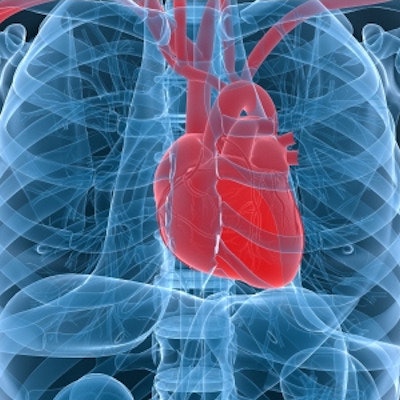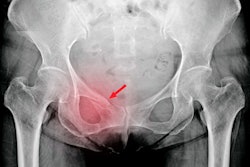
Measuring arm muscle mass on dual-energy x-ray absorptiometry (DEXA) scans can help predict mortality in older hospitalized patients with heart failure, according to a study published March 17 in Archives of Gerontology and Geriatrics.
A group of Japanese researchers compared the prognostic values of arm and leg muscle mass measured using DEXA in hospitalized elderly patients with heart failure. They found that upper arm muscle mass offers incremental prognostic value, and they suggested the scans could be useful for identifying high-risk patients in daily clinical practice.
"Low [muscle mass], diagnosed based on the arms and not the legs, was associated with poor prognosis in patients with heart failure," wrote corresponding author Dr. Yuya Matsue, PhD, of Juntendo University Graduate School of Medicine in Tokyo.
DEXA is one of the most widely accepted methods in clinical settings for measuring muscle mass, and muscle wasting (sarcopenia) is a known predictor of frailty and reduced survival in heart failure patients.
However, heart failure patients experience high rates of edema, particularly in the lower extremities, which can limit DEXA results. The researchers hypothesized that muscle mass of the upper arms is more accurate than lower leg measurements and subsequently has a better prognostic value.
Matsue and colleagues analyzed DEXA scans acquired on a commercially available system (QDR-Horizon A, Hologic) of 271 elderly (≥ 65 years) patients who underwent imaging to measure muscle mass as part of a clinical trial that ended in 2018. Patients were included if they could walk or move about at discharge. The endpoint of the study was all-cause mortality, with data relating to patient status collected up to May 2021.
During a median follow-up of 690 days, 54 patients (19.9%) died. Only measurements of the lower arms (hazard ratio [HR]: 2.05, p = 0.026), in contrast to measurements of the lower legs (HR: 1.15, p = 0.663), were associated with poor prognosis after adjusting for preexisting risk factors, according to the findings.
In addition, analysis using net reclassification improvement (NRI) metrics revealed that low arms muscle mass index (NRI: 0.353, p = 0.018), in contrast to a lower legs index (NRI: 0.219, p = 0.153), provided incremental prognostic predictability when considered with preexisting risk factors at discharge, the authors reported.
"Our study results demonstrated that extremity [muscle mass], specifically upper arm [muscle mass], measured using DEXA has an incremental prognostic value in elderly patients with heart failure," the authors wrote.
Japan is becoming a superaging society, with the number of patients with heart failure and sarcopenia increasing rapidly. Considering that low muscle mass is one of the main components for diagnosing sarcopenia associated with poor prognosis in these patients, accurate assessment of muscle mass is essential, the authors wrote.
This study suggests arm muscle mass may be more useful for screening patients with heart failure than leg muscle mass, and "it may be useful to measure the arm [muscle mass] of patients with heart failure in daily clinical practice," they wrote.
Yet further research is warranted, the researchers stated.
"Future prospective studies are needed to investigate the mechanism underlying the discrepancy in prognosis between arm and leg [muscle mass] evaluated using DEXA in patients with heart failure," Matsue and colleagues concluded.




















